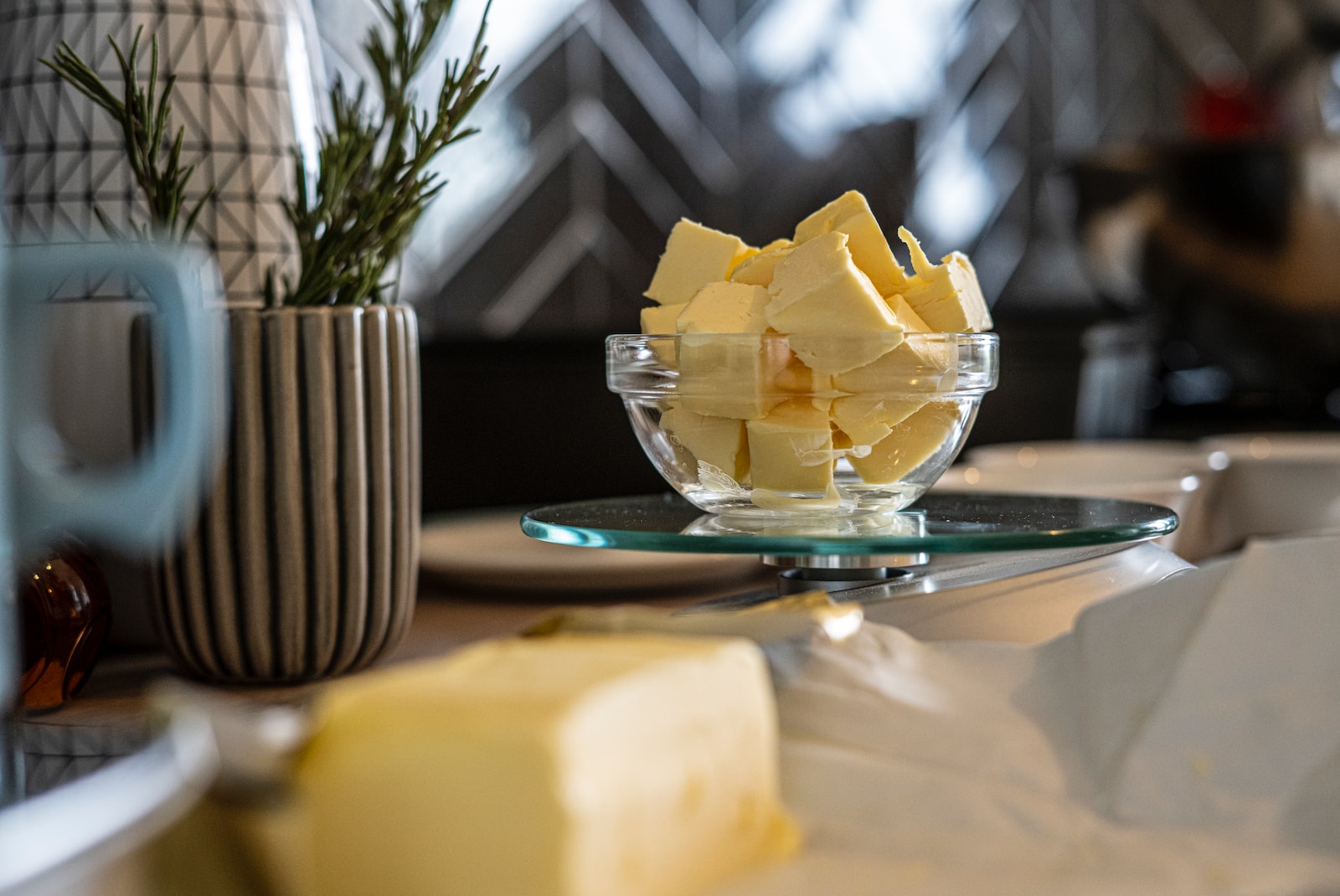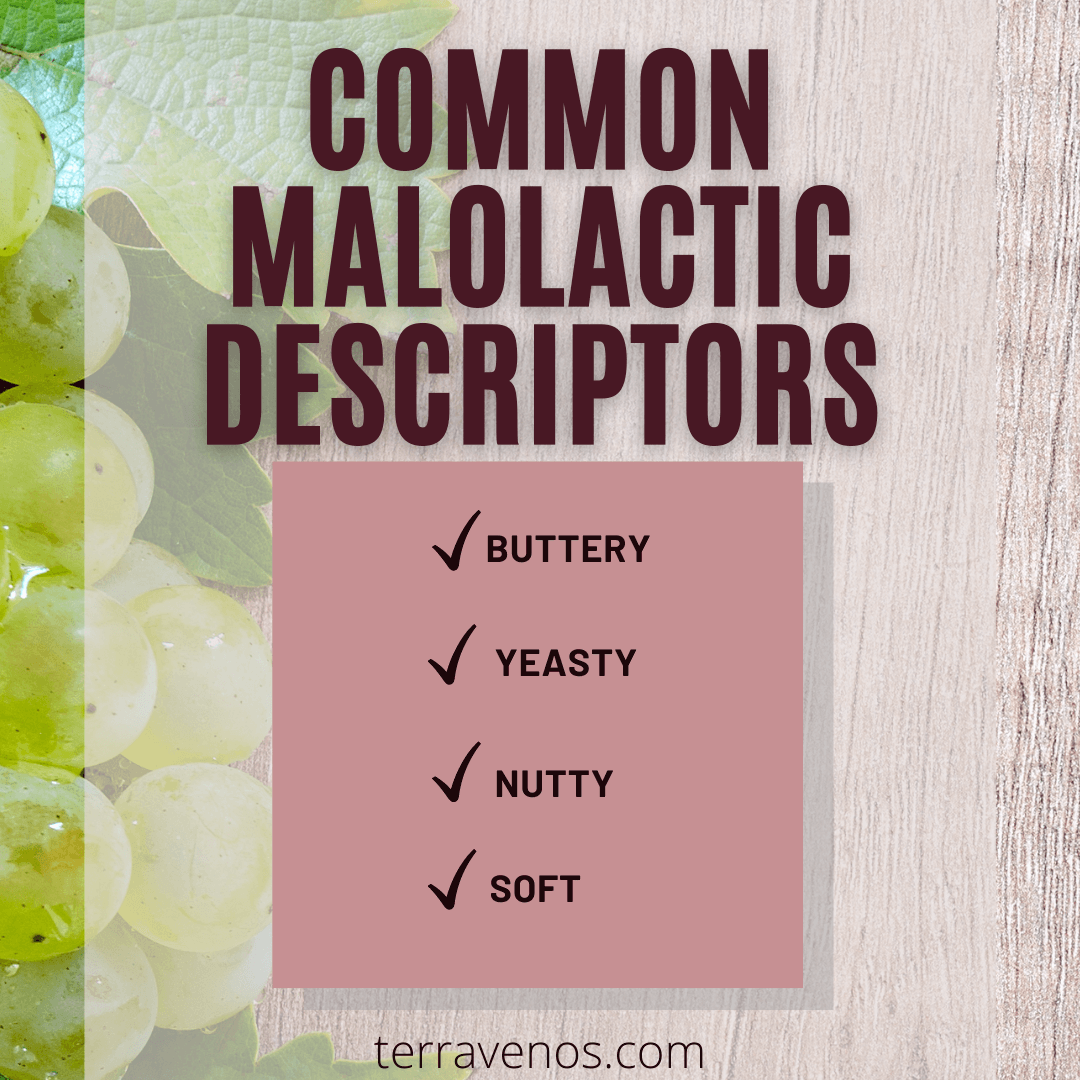
If you’ve ever taken a sip of wine and thought that it tasted like butter, you’re not imagining things! It does!
The buttery flavors and aromas in wine come from a winemaking process called malolactic conversion. The official name for the buttery flavor is diacetyl. Bacteria are responsible for malolactic conversion. Winemakers will choose whether or not to put their wine through malolactic conversion depending on the style of wine they are making. Chardonnay is the perfect example of how a wine’s expression changes with malolactic conversion.
Here’s what you need to know about why wine tastes like butter.
- How Do Wines Become Buttery?
- Common Wine Descriptors Used for Buttery Wines
- How Does Blocking Malolactic Conversion Affect the Drinking Experience?
- Final Thoughts – Why Does My Wine Taste Like Butter? Chemistry!
- Thirsty for More?
How Do Wines Become Buttery?

Buttery. Creamy. Rich.
All are adjectives used to describe wine.
But how does a little grape go from being fruity and sweet to rich and buttery?
The answer lies in chemistry with the winemaking process.
After wines go through the first, or primary fermentation process, where yeast convert the grape juice sugars into alcohol, the winemaker may decide to have the wine go through a second fermentation process, called malolactic fermentation or malolactic conversion.
Malolactic conversion relies on bacteria that convert malic acid, which tastes like tart green apples, to lactic acid, a softer acid found in milk. This malolactic conversion (often called ‘malo’, ‘MLF’, ‘MLC’ or ‘ML’) happens during or immediately following the primary fermentation.
Why would a winemaker want to put a wine through malolactic conversion?
Excellent question!
The ML process gives the wine a rounder mouthfeel and can help smooth out high levels of tart, malic acid in a wine.
The chemical process will actually result in a higher pH (making the wine less acidic overall).
But wait: How does the butter get into the wine?
One of the bi-products of ML conversion is a compound called diacetyl, literally butter flavor. Butter popcorn jelly beans rely on the same chemical compound to give your mouth that burst of buttery goodness. In fact, diacetyl is responsible for all synthetic buttery-ness.
Winemakers can select different strains of the bacteria to produce different levels of the butter flavor in their wines.
Fun Wine Fact: Almost all red wines and some white wines go through malolactic conversion.
The process actually stabilizes the wine so that ML conversion doesn’t start to happen naturally when the wine’s sitting on your wine rack waiting to be enjoyed. Arguably a good thing.
Common Wine Descriptors Used for Buttery Wines

Common words that describe wines after malolactic conversion are: butter, yeasty, nutty, and soft.
Which Wines Skip Malolactic Fermentation?
That said, some wine styles aren’t suitable for malolactic fermentation.
Fresh, fruity whites with tons of fruit character and zingy acidity tend to be better off forgoing malo.
Wines like Sauvignon Blanc tend to skip MLC, as does Pinot Grigio. Early-drinking reds may also fall into this category, like Beaujolais Nouveau.
In this case, the winemaker may choose to sterile filter the wine or use an enzyme, called lysozyme, to inhibit the conversion process.
Generally speaking, aromatic grape varieties tend to be better off without MLF so that the wine showcases the fruit, not the winemaking process.
Why’s Chardonnay Always the Buttery Wine?

Chardonnay is a relatively neutral grape that lends itself to manipulation in the winery, this includes putting the wine through malolactic conversion.
When wine lovers talk about Chardonnay, they tend to fall into one of two groups:
- those who love buttery Chardonnay, and
- those who don’t
The only difference between the two wine styles is malolactic conversion.
Using a bacteria strain that produces high levels of diacetyl can give Chardonnay a lovely soft buttery quality that marries well with oak.
Helpful Wine Buying Tip: Chardonnay names like “Butter” or “Cream” hint at this buttery, richer style of wine.
Others prefer nothing but fruit for their Chardonnay.
This style of Chardonnay tends to be higher in acid, showcasing crisp fruit, whether it’s citrus and apple, or peach, nectarine, and other stone fruits. These Chardonnays are higher in acid because the winemaker inhibits malolactic conversion.
How Does Blocking Malolactic Conversion Affect the Drinking Experience?
The higher acidity tricks your brain into thinking the wine has juicier, fresher fruit.
Chardonnay made this way tends to avoid time spent on oak, keeping the wine linear in its expression.
Look for Chardonnay descriptors that have adjectives like:
- fresh
- firm
- crisp
- juicy
You may even find hints about the wine style if the label refers to stainless steel or concrete for the winemaking process.
The classic expression of Chablis, from the Northern Burgundy region of France, embraces the no-malo winemaking approach.
Final Thoughts – Why Does My Wine Taste Like Butter? Chemistry!
If you are sipping on a wine that reminds you of butter, then you’re experiencing the magic of chemistry. Thanks to malolactic conversion, your wine is softer, more stable, and now has a buttery note.
Chardonnay is the perfect grape to understand how wine can express both fruit and winemaking through the process of malolactic conversion.
- If you love fruit-forward, crisp, crunchy white wines (like Riesling and Sauvignon Blanc), you’ll probably enjoy unoaked Chardonnays. Try a Chablis, for example.
- If you love round, full-bodied white wines, then you’ll want an oaky, buttery Chardonnay.
Try to find a few bottles of Chardonnay with different descriptors as a fun side-by-side tasting activity.
Check out this post on 5 fun Chardonnay facts for more on this elusive little grape.
Thirsty for More?
Here’s my list of everyday go-to Chardonnay food pairings for real people with real lives.
Go visit this post for a deep dive and Chardonnay wine guide.
Red wines can also go through malolactic fermentation (almost all do), giving them a rounded mouthfeel. Check out this post on buttery red wines if you’re looking for something similar in a red wine.



